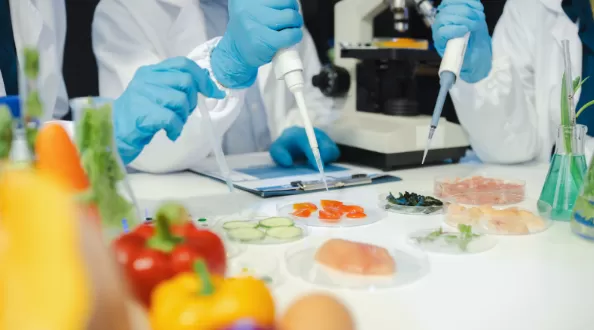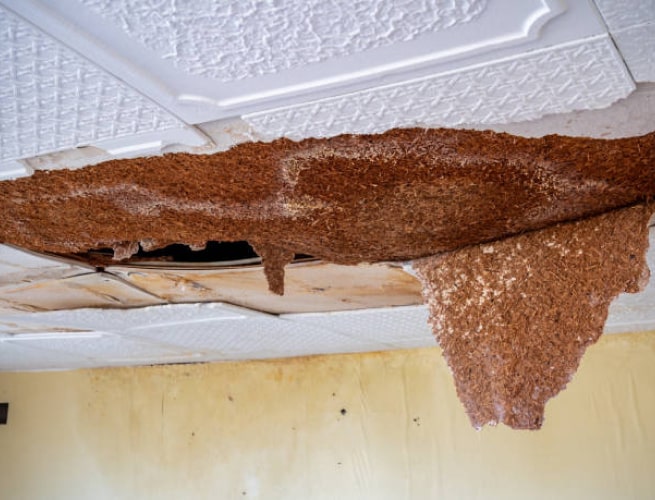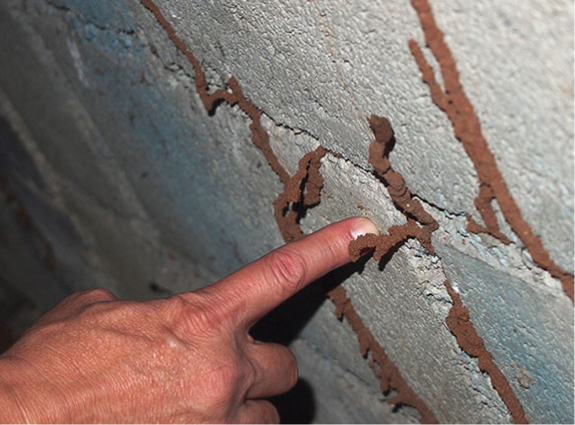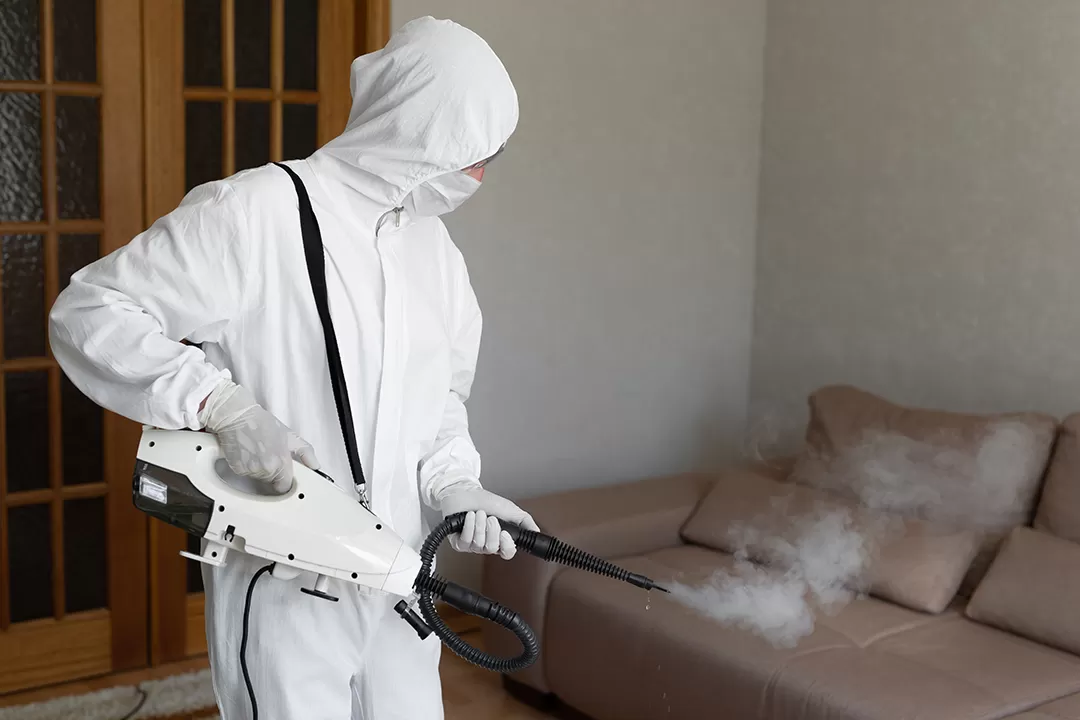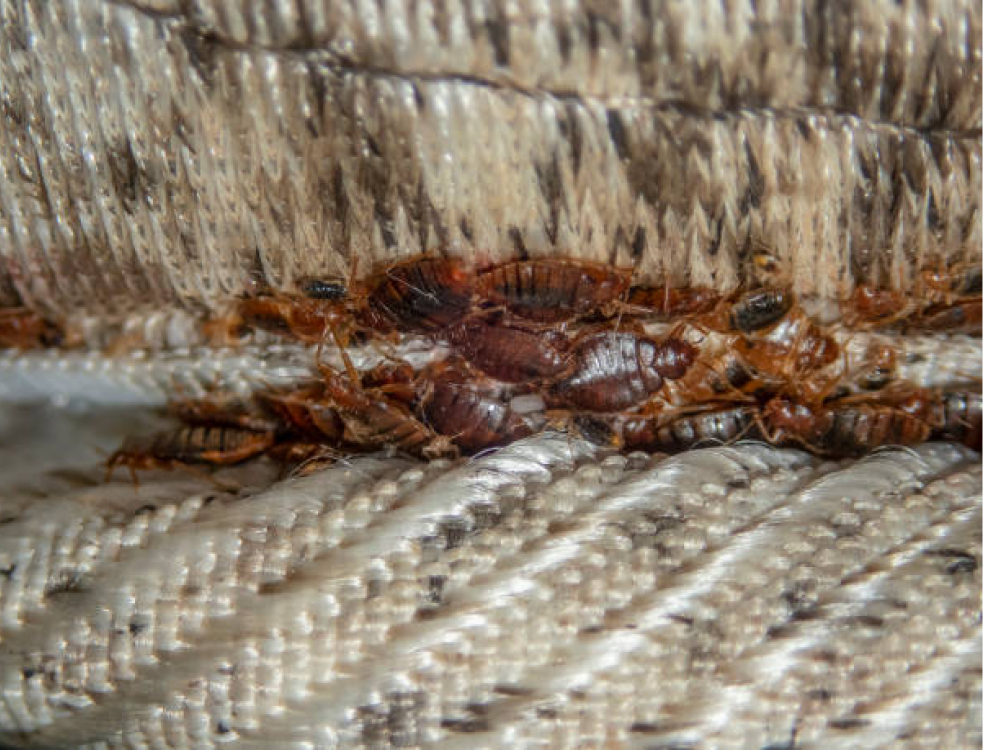Food safety is essential not only for your health but also for ensuring a pest-free environment in your kitchen. Many individuals unknowingly make common mistakes that can lead to foodborne illnesses and attract unwanted pests. To assist you in maintaining a safe kitchen, here are ten critical food safety blunders to avoid, ranging from improper hand washing to inadequate food storage. By addressing these practices, you can significantly improve pest control and create a safe, pest-free kitchen for yourself and your family.
Key Takeaways:
- Wash your hands before handling food to prevent the spread of bacteria and potential foodborne diseases and illnesses.
- Avoid cross-contamination by keeping raw and cooked foods separate and using separate utensils and surfaces.
- Properly storing food and following safe food handling guidelines can prevent pests from being attracted to your kitchen.
Not Washing Hands Before Handling Food
Failing to wash hands before handling food is a significant issue that can lead to food contamination, which poses serious risks to public health and affects nutrition and food security. Studies indicate that inadequate hand hygiene is a major factor contributing to foodborne illnesses, affecting millions of people around the world each year.
It is essential for food handlers to recognize the importance of proper handwashing techniques and understand how harmful bacteria can impact food safety. This straightforward yet effective practice can greatly reduce the risk of foodborne diseases, ensuring the safety of the food supply from production to consumption.
Cross-Contamination of Raw and Cooked Foods
Cross-contamination occurs when harmful bacteria from raw meat or other contaminated food products come into contact with cooked foods, leading to significant food safety concerns and potentially implicating national food control systems. This situation not only jeopardizes the safety of the food supply but can also result in foodborne illnesses that pose risks to public health. Preventing cross-contamination requires a strict adherence to food safety practices, such as using separate cutting boards for raw and cooked foods.
Understanding cross-contamination is essential for maintaining a safe kitchen environment and supporting the global strategy for food safety.
For example, if a chef uses the same knife to cut raw chicken and then slices vegetables for a salad without properly cleaning it, bacteria can easily transfer and taint the vegetables. This practice highlights the necessity of closely monitoring food handling methods.
To mitigate these risks, it is beneficial to implement comprehensive food safety practices, which may include:
- Utilizing color-coded cutting boards.
- Keeping raw meat on the lower shelves of the refrigerator.
- Training kitchen staff on proper sanitation procedures.
By being vigilant and proactive, individuals can significantly reduce the chances of food contamination and ensure the health and safety of everyone consuming the meals prepared in their kitchens.
Not Properly Storing Food
Not properly storing food can result in significant food safety risks, including contamination and spoilage that may jeopardize public health and violate food safety standards.
It is essential to understand the importance of effective food storage techniques in maintaining food quality and safety. To ensure that food remains safe for consumption, employing temperature control methods, such as refrigeration or freezing, is crucial, depending on the type of food. Additionally, proper packaging techniques are vital; using airtight containers can help inhibit the growth of harmful microorganisms.
Neglecting these guidelines can have serious consequences, such as the proliferation of dangerous bacteria like Salmonella or E. coli, which can lead to severe foodborne illnesses and affect low- and middle-income countries.
This not only impacts individual consumers but can also have far-reaching repercussions for the food industry, including public health crises and financial losses for food establishments.
Therefore, implementing stringent food storage practices is not merely a personal responsibility but a collective obligation to create a safer food environment.
Not Cooking Food to the Correct Temperature
Not cooking food to the proper temperature is a frequent oversight that can lead to foodborne illnesses, particularly with meat and poultry, which are often home to harmful bacteria. It is essential to utilize a food thermometer to ensure that food reaches the safe cooking temperature, thereby protecting consumers from the risks associated with undercooked meals. Proper cooking not only enhances the safety and quality of food but also plays a crucial role in maintaining a safe food supply chain.
Many individuals often underestimate the importance of using a food thermometer, yet it is indeed a vital tool in the kitchen. Cooking meat to the recommended temperatures is key to eliminating threats such as Salmonella and E. coli, which can result in serious health issues. For example, ground beef should be cooked to an internal temperature of 160°F, while poultry needs to reach at least 165°F to be deemed safe.
According to the Centers for Disease Control and Prevention (CDC), around 48 million people in the United States fall ill due to foodborne diseases each year—that’s approximately 1 in 6 individuals who suffer from the burden of foodborne diseases.
Utilizing a thermometer can significantly reduce these alarming statistics. Here’s a quick reference guide:
- Beef, Pork: 145°F (allow to rest for 3 minutes)
- Poultry: 165°F
- Fish: 145°F
- Eggs: Cook until yolk and white are firm
By adopting these safe cooking practices, one can enjoy delicious meals while effectively minimizing health risks.
Leaving Food Out for Too Long
Leaving food out for too long presents a significant risk of contamination and can lead to foodborne illnesses, which place a considerable burden on public health systems. Perishable food should not remain unrefrigerated for extended periods, as harmful bacteria can multiply rapidly, increasing the likelihood of food poisoning. Safe food handling practices recommend following the two-hour rule for perishable items to help ensure food safety and prevent illness from consuming contaminated food.
It is important to recognize that the risks extend beyond food poisoning; they can escalate into severe health complications, particularly for vulnerable populations such as children, the elderly, and those with compromised immune systems. To effectively mitigate these risks, individuals should adopt proper food storage methods to ensure both longevity and safety.
Here are some essential tips:
- Keep refrigerators set at or below 40°F (4°C) to inhibit bacterial growth.
- Store leftovers in airtight containers and label them with the date to keep track of freshness.
- Avoid crowding the fridge, as proper air circulation is vital.
- Utilize a food thermometer to ensure that cooked items reach safe internal temperatures.
Maintaining appropriate temperatures during cooking, storage, and serving not only preserves the quality of food but also protects your health. When in doubt, it is always safer to err on the side of caution and refrigerate food promptly to prevent any potential risks of foodborne illnesses.
Not Cleaning Kitchen Surfaces and Utensils Properly
Not properly cleaning kitchen surfaces and utensils is a significant factor contributing to food contamination and the spread of harmful bacteria. It is essential to ensure that all surfaces and utensils are thoroughly cleaned before, during, and after food preparation to maintain food safety and prevent foodborne illnesses. Regularly sanitizing these areas not only protects consumers but also helps food establishments comply with food safety standards.
A clean kitchen environment is vital for creating a safe food preparation space. This involves not just wiping down counters and stove tops but also ensuring that cutting boards and utensils are frequently sanitized with effective agents, such as bleach solutions or specialized kitchen sanitizers. Proper cleanliness practices include:
- Washing hands frequently with soap and water
- Using separate utensils for raw and cooked foods
- Regularly cleaning and sanitizing kitchen appliances, especially those in direct contact with food
Neglecting these practices can lead to severe consequences, resulting in foodborne illnesses that impact individual health and pose a broader public health risk. Therefore, it is wise for everyone involved in food preparation to prioritize sanitation, ensuring that a safe and hygienic kitchen environment supports the well-being of all consumers.
Using Expired or Spoiled Ingredients
Using expired or spoiled ingredients can lead to significant food safety issues, including the risk of foodborne illnesses and contamination, affecting food security.
It is crucial for both consumers and food handlers to remain vigilant in checking expiration dates and the condition of their ingredients to practice safe food handling. Utilizing spoiled food not only compromises the quality of meals but can also have serious implications for public health.
It is important to understand that ingredients such as dairy products, meats, and certain types of produce can harbor harmful bacteria once they surpass their expiration dates. For example, consuming spoiled dairy may result in reactions such as nausea or diarrhea, while rotten meat can carry pathogens like Salmonella, which are threats associated with unsafe food. Besides the adverse health effects, using expired ingredients can lead to unpleasant odors and tastes that can ruin your dishes and affect food standards.
To minimize these risks, consider implementing the following best practices:
- Regularly check expiration dates: Make it a habit to inspect the dates on all products upon purchase and before use.
- Store properly: Ensure that ingredients are kept under optimal conditions, such as maintaining a consistent refrigerator temperature and using airtight containers.
- Trust your senses: If an item appears or smells off, it is wise to err on the side of caution.
By adopting these safety measures, individuals can significantly reduce the risks associated with expired ingredients and ensure safe and nutritious food.
Not Following Proper Food Handling and Storage Guidelines
Adhering to international food safety authorities network guidelines is crucial.
Failing to adhere to proper food handling and storage guidelines can pose serious risks within the food safety system, leading to contamination and chemical contamination that threatens public health. It is essential to follow established food handling practices to prevent foodborne illnesses and ensure that food products are free from harmful bacteria, maintaining a robust food control system assessment tool.
From the moment food is produced until it reaches the consumer, every step in the food chain must meet safety standards to maintain public trust and safety.
Not Thawing Frozen Foods Safely
It’s important to understand the cycle of disease and malnutrition linked to unsafe practices.
Not thawing frozen foods safely can lead to foodborne illnesses and contamination, as improper thawing techniques create an environment where harmful bacteria can thrive. To ensure food safety and maintain the quality of food products, it is crucial to follow safe food handling practices when defrosting. This includes thawing foods in the refrigerator, using cold water, or employing the microwave, rather than leaving them at room temperature.
When considering the consequences of improper thawing, it becomes evident that safe thawing methods are essential in preventing potential health risks, such as illness or death.
For example, using the refrigerator not only keeps food at a safe temperature but also helps preserve its overall quality. The cold water method is quicker but requires constant attention to ensure the water remains cold. Conversely, defrosting in the microwave can be effective; however, it is important to cook the food immediately afterwards, as some parts may start cooking while others are still frozen.
Here are some key tips for safe thawing:
- Always plan ahead and use the refrigerator method when possible.
- Ensure that the microwave is set to defrost, not cook.
- Use cold water, changing it every 30 minutes for optimal results.
By following these guidelines, individuals can significantly reduce the risk of foodborne illness, ensuring that meals are both enjoyable and safe to consume.
Not Properly Labeling and Storing Leftovers
Not properly labeling and storing leftovers can create confusion and potentially lead to foodborne illnesses from consuming spoiled or contaminated food. Food safety guidelines highlight the importance of clear labeling, which includes both dates and contents, as a way to help consumers track the freshness of perishable items. Additionally, proper storage techniques are crucial for maintaining food quality and preventing contamination.
In the kitchen, effective organization is essential. Regarding handling leftovers, it’s important to adopt practices that ensure both safety and freshness.
Here are some best practices to keep in mind:
- Label Every Container: Always mark leftovers with the date they were prepared and a description of their contents.
- Store Properly: Use airtight containers to minimize exposure to air, which can accelerate spoilage.
- Practice FIFO: Follow the “first in, first out” rule to consume older leftovers before newer ones.
Neglecting these straightforward steps can lead to serious health risks, such as food poisoning and contamination, impacting not just individuals but also public health as a whole.
By embracing mindful storage habits, consumers can protect themselves and their families from foodborne illnesses, ensuring that mealtime remains both safe and enjoyable.
Why Is Food Safety Important for Pest Control?
Food safety plays a crucial role in pest control, as maintaining proper food handling and storage practices can greatly decrease the likelihood of pest infestations, which could impact global food safety. These infestations can lead to food contamination and pose risks to public health.
When pests infiltrate food establishments, they not only endanger the safety of food products but also foster conditions that allow foodborne diseases to flourish. Therefore, it is essential to adopt a comprehensive strategy for food safety as part of effective pest control measures.
What Are the Most Common Pests Found in Kitchens and Food Storage Areas?
Common pests found in kitchens and food storage areas, such as rodents, cockroaches, and flies, present significant threats to food safety and hygiene, affecting the food and agriculture sectors.
These pests can contaminate food products and surfaces, potentially leading to foodborne illnesses and impacting public health. Therefore, implementing effective pest management strategies is essential for eliminating these threats and maintaining a safe food environment.
The presence of these pests not only poses direct health risks but can also cause considerable damage to stored food items. For example, rodents are well-known for their ability to chew through packaging, while cockroaches can spread bacteria through their droppings, compromising both food sources and the surfaces they encounter. Flies, attracted to decomposing matter, can carry pathogens that lead to various diseases.
Utilizing pest management techniques, such as sanitation practices, sealing entry points, and employing pest traps, is critical in mitigating these risks, in line with codex alimentarius guidelines.
Important steps include:
- Regularly cleaning food preparation areas.
- Storing food in airtight containers.
- Inspecting incoming goods for signs of infestation.
By adopting these preventive measures, homeowners and businesses can significantly reduce the likelihood of an infestation, ensuring a healthy environment for food storage and preparation.
How Can Proper Food Safety Practices Help Prevent Pest Infestations?
Adhering to proper food safety practices, such as maintaining cleanliness and organizing food storage, is essential for preventing pest infestations in kitchens and food storage areas. By focusing on food handling protocols and ensuring that food products are sealed and stored appropriately, establishments can significantly reduce the risks associated with food contamination and pest-related issues. This proactive approach is vital for protecting public health.
Implementing thorough sanitation measures is imperative. This includes regularly cleaning surfaces and promptly addressing spills to create an environment that is unwelcoming to pests.
Here are some practical tips for ensuring proper food safety:
- Maintain cleanliness: Regularly wipe down countertops and kitchen utensils to eliminate food particles that may attract pests.
- Use airtight containers: Sealing food in airtight containers not only keeps it fresh but also prevents pests from gaining access.
- Monitor food expiration dates: Frequently check your pantry for expired items, as spoiled goods can attract unwanted attention.
- Implement proper disposal methods: Regularly empty trash bins and utilize lids to deter pests.
By adopting these habits, you can effectively enhance food safety and create a deterrent against pest infestations.
What Are the Consequences of Ignoring Food Safety in Relation to Pest Control?
Ignoring food safety measures in the context of pest control can lead to serious consequences, such as heightened risks of foodborne illnesses and contamination that endanger public health. When pests are allowed to flourish in food establishments without appropriate intervention, they can compromise the safety of food products, potentially resulting in outbreaks and regulatory penalties. Consequently, it is crucial to prioritize food safety as an integral part of effective pest control.
Neglecting this important issue can result in disastrous outcomes, where unchecked pest infestations not only pose a danger to consumers but also tarnish a restaurant’s reputation. For example, foodborne pathogens linked to rodents and cockroaches can contaminate surfaces, utensils, and ingredients, significantly increasing the risk of widespread illness.
- In 2013, a notable outbreak associated with a fast-food chain led to hundreds of hospitalizations due to contaminated produce.
- Bacteria such as Salmonella and E. coli can easily proliferate in environments where pests are present, highlighting the necessity of integrated pest management.
Regulatory fines and potential closures can have a severe impact on businesses that overlook the critical connection between pest control and food safety.
How Can Aardwolf Pestkare Help with Food Safety and Pest Control?
Aardwolf Pestkare provides comprehensive pest control services that prioritize food safety and inspection service, assisting food establishments in maintaining a secure environment for their consumers.
With a strong commitment to excellence, they implement tailored techniques designed to not only eliminate current pest issues but also prevent future occurrences, supporting the food safety modernization act. Each service is supported by thorough inspections, ensuring that clients receive the most effective solutions available.
For example, one restaurant reported a notable decrease in pest sightings after following Aardwolf’s recommendations and treatments. Many satisfied clients express their appreciation for how the expert team not only addresses pest problems but also offers practical advice on maintaining an insect-free environment. This dual approach effectively enhances the overall safety and hygiene standards of their establishments.
Aardwolf Pestkare offers:
- Customized treatment plans based on the specific needs of each client, enhancing standards for food safety.
- Regular follow-ups to ensure ongoing pest control success.
- Educational resources on best practices for food safety.
Understanding that a pest-free environment is essential for both businesses and their customers, Aardwolf Pestkare positions itself as a reliable partner in ensuring quality and safety, meeting the needs of the food and agriculture organization and its member states.
What Are Some Additional Tips for Maintaining a Pest-Free Kitchen, crucial for the food production system?
Maintaining a pest-free kitchen involves consistent practices in food safety, cleanliness, and proper food storage to effectively deter unwanted pests, supporting store food initiatives.
Simple actions such as regularly inspecting food supplies and discarding expired items, keeping countertops clean and free of crumbs, and sealing food items in airtight containers can significantly help in preventing infestations, aligning with the five keys to safer food.
It’s essential to recognize that the kitchen is a prime target for pests due to the abundance of food sources. Therefore, collaborating with pest management professionals can further enhance the strategies to maintain a safe and hygienic kitchen environment.
Here are some proactive measures to consider:
- Wipe up spills immediately to avoid attracting pests.
- Store pet food in sealed containers and avoid leaving it out overnight.
- Keep garbage bins tightly closed and empty them regularly.
Ultimately, by taking these steps, one ensures a healthier living space, preventing people from feeling ill after eating contaminated food.
Frequently Asked Questions
What are some common food safety mistakes to avoid that might involve causal relationships between food contamination?
Some common food safety mistakes to avoid include not washing your hands before handling food, not storing food at the proper temperature, and not properly cooking meats.
How can I prevent foodborne illnesses?
To prevent foodborne illnesses, make sure to wash your hands before and after handling food, cook food to the proper temperature, and store food in the refrigerator or freezer at the correct temperature.
What is the danger of cross-contamination in the context of food contamination and resulting illness?
Cross-contamination can occur when raw meat or poultry comes into contact with other foods, utensils, or surfaces. This can lead to the spread of bacteria and potentially cause foodborne illness.
What are some ways to prevent cross-contamination?
To prevent cross-contamination, make sure to use separate cutting boards and utensils for raw meats and other foods, wash your hands after handling raw meats, and clean and sanitize surfaces after use.
Why is it important to properly store food, especially fresh fruits and vegetables?
Properly storing food is important because it helps prevent the growth of bacteria and other harmful pathogens. Refrigeration and freezing can slow down the growth of bacteria, keeping your food safe to eat.
What are some other food safety tips to keep in mind for food and nutrition?
In addition to proper handwashing and food storage, it is also important to avoid eating raw meats or unpasteurized dairy products, properly clean and sanitize kitchen surfaces, and follow expiration dates on food products.

